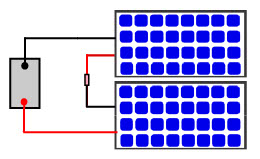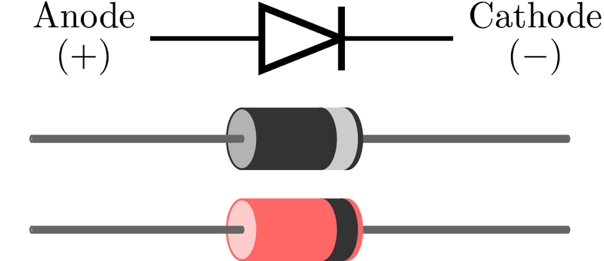Phone: (301) 352-5738
Email: info@CoastalClimateControl.com
Office | Warehouse:
1598 Whitehall Road, Suite D
Annapolis, Maryland 21409
Sun-Day Racers

I had a bit of hard job the other day trying to explain the workings of a solar panel to a colleague, and it got me searching for a suitable analogy. Yes, there is the well-used comparison of water to electrical flow, but that’s a tad drippy and wishy-washy in my view, and I was looking for something more illustrative and fun.
So, how about this:
By connecting a solar panel to a battery (for simplicity this blog will ignore the presence of a controller/regulator or blocking diode) we create an electrical circuit, which by definition suggests something that starts and ends at the same place. And around this circuit we have electricity racing round and round. So, to me that sounds just like a racing circuit, and as a long time motor racing buff (Formula One in particular) it spurred my little gray cells into action.
 Let’s try and imagine our solar panel-battery circuit as a racetrack, with electrically powered race cars called Elektrons whizzing round and round. The solar panel itself is the refueling section where the Elektrons get recharged on every lap before heading off out to the Battery and then back via connecting tracks (think cables). As long as the track is clear and the Battery section is not restricting traffic, the Elektrons are free to race around to their hearts content.
Let’s try and imagine our solar panel-battery circuit as a racetrack, with electrically powered race cars called Elektrons whizzing round and round. The solar panel itself is the refueling section where the Elektrons get recharged on every lap before heading off out to the Battery and then back via connecting tracks (think cables). As long as the track is clear and the Battery section is not restricting traffic, the Elektrons are free to race around to their hearts content.
So, what problems could be encountered that would slow these Elektrons down?
Well, there’s poor visibility for a start. Let’s say that there’s a factory next door to the track that spews out nasty thick smoke from a chimney on occasion. When that smoke drifts across the track’s refueling section it reduces the amount of daylight in that area and the Elektrons have to slow down to get through it.
Cells in a solar panel are connected electrically in series, in a daisy-chain fashion, in order to increase panel voltage. Accordingly, shading on any one cell will reduce the output of the entire panel in proportion to the intensity of the shading.
This is a bad enough situation, but when the smoke is so thick that it completely blocks the daylight to some sections of the track, driving through it is impossible and so racing is bought to a standstill.
In order to prevent the Elektrons being stuck out on the track, the savvy circuit owner has installed electronically activated by-pass gates in some areas that open automatically when the track is impassable in a section due to the lack of daylight. These gates provide short-cuts that connect different sections of the track and allow the Elektrons to by-pass the impassable section of track. This results in the Elektrons being unable to receive a full charge on every lap and slowing them down, but at least they are still circulating.
 By-Pass Diodes, also known as “Hot Spot Preventers” are installed on, in, and sometimes remotely to solar panels in order to shunt currents around a cell or group of cells that are very heavily shaded or covered by something that blocks light getting through to the cell surface. Without this protection, cells that are accidentally covered can heat up to the point of destruction and even promote fire.
By-Pass Diodes, also known as “Hot Spot Preventers” are installed on, in, and sometimes remotely to solar panels in order to shunt currents around a cell or group of cells that are very heavily shaded or covered by something that blocks light getting through to the cell surface. Without this protection, cells that are accidentally covered can heat up to the point of destruction and even promote fire.
The Battery area of the circuit is a twisting, narrow section where the Elektrons have to slow down through a drive-through toll section where some of their energy is removed. After a while the Battery energy storage tank becomes full, and the flow of Elektrons is restricted. This can lead to a bumper-to-bumper backup that is only eased by removing some of the Elektrons from the Battery section, allowing the flow to resume. The Elektrons that are removed are circulated around a separate circuit for a while before rejoining the main circuit when the congestion has eased.
When a lead-acid battery is being charged from a solar panel, it will accept decreasing magnitudes of charge current until, when 100% charged, no current flows into the battery from the solar panel. The solar panel will then be producing zero output until a DC load is applied to the battery, and then the solar panel will supply the power to run, or help to run, the load.
To test output from a solar panel, you’ll need to turn off all other charge sources and turn on all available DC loads.
Due to the success of his Elektron racing, the circuit owner now needs to have a longer track to accommodate increased demand, so he builds another identical circuit right next door. But then he finds himself in a quandary as to how best to connect the two circuits together.
If he connects the two circuits in a series fashion to make one long circuit, the possibility of that awful smoke darkening sections of track and slowing down the Elektrons remains a threat. Any restriction of daylight anywhere on this mega-track would lead to a bottle-neck and a slow-down around the entire circuit, and that wouldn’t be good for the show.
 Connecting solar panels in series connects all cells in all the panels together in a series chain, so any shading on any one cell on any one panel affects the total output in proportion to the intensity of the shading.
Connecting solar panels in series connects all cells in all the panels together in a series chain, so any shading on any one cell on any one panel affects the total output in proportion to the intensity of the shading.
Alternatively, he could run two separate races in parallel around each circuit, bringing them back together to go through the Battery section before separating them again back on to their respective circuits. This would entail enlarging the Battery section and the tracks (cables) in and out of it to handle the increased flow of Elektrons, but it has one big benefit. If one circuit suffered a slow-down due to a lack of daylight from smoke infiltration, the Elektrons in the other circuit will still be circulating at full speed unhampered.
 If solar panels are connected in parallel, any effects from slight to moderate shading on any one panel are confined to that panel, and in that regard it is preferrable to a series configuration.
If solar panels are connected in parallel, any effects from slight to moderate shading on any one panel are confined to that panel, and in that regard it is preferrable to a series configuration.
However, the current flowing through wires and cables downstream of the parallel connection point increases by a factor of the number of panels connected. As a result, wire and cable sizes need to be increased in order to reduce excessive power loss and to stay within safety limits.
But there’s a tricky problem with this parallel solution. What happens if one circuit slows up due to thick smoke blocking the daylight in one section, and all the Elektrons on that circuit try to cross over to the unrestricted circuit and clog it up?
To counter that possibility, the circuit owner has installed electronic blocking gates that all Elektrons must pass through, and which prevent them sneaking over from one circuit to the other. These gates cause a slight restriction and slows things down a little, but at least one circuit is kept running unhindered if the other is put out of action by lack of daylight from the smoke.

Blocking Diodes should be installed in the positive output cable of each solar panel in a parallel array. These only allow current to flow in one direction, i.e. the direction the arrow-head is pointing. This prevents one or more panels from back-feeding into a panel whose output is compromised by a cell or group of cells being shaded.
Without Blocking Diodes, the entire output from one or more panels can back-feed into a shaded panel and cause panel failure and possibly start a fire due to cells overheating.
I hope this goes some way to clearing up some of the myths and mysteries of solar panels and their installation. If not, I had fun anyway and it helped fire me up for the upcoming Formula One season. Another Schumacher (Mick, son of Michael) on the track this year will be something to watch, especially so as he’s in the American Haas team.
Stay safe and well out there!
By accepting you will be accessing a service provided by a third-party external to https://coastalclimatecontrol.com/






